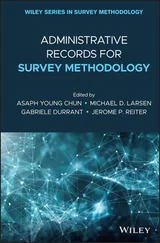1 Cover
2 Title Page Methodologies in Amine Synthesis Challenges and Applications Edited by Alfredo Ricci and Luca Bernardi
3 Copyright Editors Prof. Alfredo Ricci University of Bologna Department of Industrial Chemistry “Toso Montanari” Viale del Risorgimento 4 40136 Bologna Italy Prof. Luca Bernardi University of Bologna Department of Industrial Chemistry “Toso Montanari” & INSTM Research Unit Bologna Viale del Risorgimento 4 40136 Bologna Italy All books published by Wiley‐VCH are carefully produced. Nevertheless, authors, editors, and publisher do not warrant the information contained in these books, including this book, to be free of errors. Readers are advised to keep in mind that statements, data, illustrations, procedural details or other items may inadvertently be inaccurate. Library of Congress Card No.: applied for British Library Cataloguing‐in‐Publication Data A catalogue record for this book is available from the British Library. Bibliographic information published by the Deutsche Nationalbibliothek The Deutsche Nationalbibliothek lists this publication in the Deutsche Nationalbibliografie; detailed bibliographic data are available on the Internet at < http://dnb.d-nb.de >. © 2021 WILEY‐VCH GmbH, Boschstr. 12, 69469 Weinheim, Germany All rights reserved (including those of translation into other languages). No part of this book may be reproduced in any form – by photoprinting, microfilm, or any other means – nor transmitted or translated into a machine language without written permission from the publishers. Registered names, trademarks, etc. used in this book, even when not specifically marked as such, are not to be considered unprotected by law. Print ISBN: 978‐3‐527‐34739‐1 ePDF ISBN: 978‐3‐527‐82617‐9 ePub ISBN: 978‐3‐527‐82619‐3 oBook ISBN: 978‐3‐527‐82618‐6
4 Preface
5 1 Substitution‐type Electrophilic Amination Using Hydroxylamine‐Derived Reagents 1.1 Introduction 1.2 Cu‐Catalyzed Reactions 1.3 Electrophilic Amination Reactions Catalyzed by Other Transition Metals 1.4 Electrophilic Amination with Hydroxylamine‐derived Metallanitrenes 1.5 Transition‐Metal‐Free Electrophilic Amination Reactions 1.6 Conclusion References
6 2 Remote Functionalizations Using Nitrogen Radicals in H‐Atom Transfer (HAT) Reactions 2.1 Introduction 2.2 Intramolecular 1,5‐H‐Atom Transfer (1,5‐HAT) 2.3 Photoinduced Strategies 2.4 Thermal Strategies 2.5 Summary and Conclusions References
7 3 Radical‐Based C—N Bond Formation in Photo/Electrochemistry 3.1 Introduction 3.2 C—N Bond Formation via N‐radical Species Addition 3.3 Amination via N‐atom Nucleophilic Addition 3.4 Amination via Radical Cross‐coupling 3.5 Summary and Conclusions References
8 4 Propargylamines: Recent Advances in Asymmetric Synthesis and Use as Chemical Tools in Organic Chemistry 4.1 Introduction 4.2 Metal‐Catalyzed Asymmetric Synthesis of Propargylamines 4.3 Enzymatic Synthesis of Propargylamines 4.4 Photoredox Synthesis of Propargylamines 4.5 Organocatalyzed Asymmetric Synthesis of Propargylamines 4.6 Propargylamines as Building Blocks in the Synthesis of Heterocycles 4.7 Conclusions References
9 5 Transition‐Metal‐Catalyzed Chiral Amines Synthesis 5.1 Introduction 5.2 Asymmetric Reductive Amination 5.3 Asymmetric Hydroamination 5.4 Asymmetric Hydroaminoalkylation 5.5 Asymmetric Hydroaminomethylation 5.6 Coupling on a Chiral Metal Center 5.7 Conclusion References
10 6 Industrial Relevance of Asymmetric Organocatalysis in the Preparation of Chiral Amine Derivatives 6.1 Introduction 6.2 Organocatalysis in Manufacture: Representative Examples 6.3 Case Studies 6.4 Summary and Conclusions References Note
11 7 Biocatalytic Synthesis of Chiral Amines Using Oxidoreductases 7.1 Introduction 7.2 Amine Oxidases 7.3 Amine Dehydrogenases 7.4 Imine Reductases 7.5 Engineered Cytochrome P450s 7.6 Conclusions and Perspectives References
12 8 Engineering Functional Nanomaterials Through the Amino Group 8.1 Introduction 8.2 Quantification of Nanomaterial‐Bound Amino Groups 8.3 Exploiting Amino Compounds for the Functionalization of Carbon‐Based Nanomaterials 8.4 Amines in the Synthesis and Functionalization of Carbon Dots 8.5 Amines for the Engineering of Hybrid Organic–Inorganic Nanomaterials References
13 9 Recent Advances in the Synthesis of Nitrogen Compounds from Biomass Derivatives 9.1 Introduction 9.2 Synthesis of Nitrogen Compounds from Chitin and Its Derivatives 9.3 Synthesis of Amines and Formamides from α‐Amino Acids 9.4 Synthesis of Nitrogen Compounds from Cellulosic Biomass Derivatives 9.5 Synthesis of Nitrogen Compounds from Lignin Derivatives 9.6 Synthesis of Nitrogen Compounds from Triglycerides and Fatty Alcohols 9.7 Conclusion References
14 10 Recent Advances in the Synthesis of Arylamines in the Light of Application in Pharmaceutical and Chemical Industry 10.1 Modern Approaches to Transition‐Metal‐Catalyzed C–N Coupling in Industry 10.2 New Methodologies in the Synthesis of Arylamines on the Brink of Industrial Application 10.3 Advances to Arylamine Formation Using Intensified and More Sustainable Process Technologies 10.4 Miscellaneous Aspects of Aromatic Amination Reactions in the World of Active Pharmaceutical Ingredients References
15 Index
16 End User License Agreement
1 Chapter 4Table 4.1 Carreira's asymmetric approach to propargylamines.Table 4.2 Synthesis of propargylamines using AspRedAm.
2 Chapter 6Table 6.1 Addition of malonates to nitroalkene 56.
1 Chapter 1 Scheme 1.1 General structure of electrophilic aminating reagent. Scheme 1.2 Mechanisms of two main types of electrophilic amination. Scheme 1.3 Early examples of Cu‐catalyzed electrophilic amination. Scheme 1.4 Cu‐catalyzed electrophilic amination of organozinc reagents. Scheme 1.5 Cu‐catalyzed electrophilic amination via aryne intermediate. Scheme 1.6 Cu‐catalyzed electrophilic amination of organolithium reagents. Scheme 1.7 Electrophilic amination of arylcuprates using a NH‐oxaziridine. Scheme 1.8 Electrophilic amination via directed C–H cupration. Scheme 1.9 Cu‐catalyzed electrophilic amination of arylboronates. Scheme 1.10 Cu‐catalyzed electrophilic amination of aryl silanes. Scheme 1.11 Cu‐catalyzed electrophilic amination of silyl enol ethers. Scheme 1.12 Cu‐catalyzed electrophilic catalyzed aminoboration of styrenes.... Scheme 1.13 Cu‐catalyzed electrophilic hydroamination of styrenes. Scheme 1.14 Enantioselective Cu‐catalyzed electrophilic hydroamination of st... Scheme 1.15 Enantioselective Cu‐catalyzed electrophilic hydroamination of st... Scheme 1.16 Cu‐catalyzed electrophilic amination of alkynes. Scheme 1.17 Cu‐catalyzed annulative electrophilic amination. Scheme 1.18 Cu‐catalyzed electrophilic diamination. Scheme 1.19 Cu‐catalyzed electrophilic amino‐lactonization. Scheme 1.20 Cu‐catalyzed ring‐opening amination. Scheme 1.21 Cu‐catalyzed C–H amination of heterocycles. Scheme 1.22 Electrophilic amination catalyzed by other transition metals.... Scheme 1.23 Pd‐catalyzed aromatic C–H amination via electrophilic amination.... Scheme 1.24 Pd‐catalyzed aliphatic C–H amination via electrophilic amination... Scheme 1.25 Ru‐catalyzed C–H amination. Scheme 1.26 Pd‐catalyzed Catellani‐type C–H electrophilic amination. Scheme 1.27 Fe‐catalyzed electrophilic amination of styrenes. Scheme 1.28 Rh‐catalyzed formation of metallanitrenes. Scheme 1.29 Rh‐catalyzed NH‐aziridination of unactivated olefins using DPH.... Scheme 1.30 Rh‐catalyzed NH‐aziridination of unactivated olefins using HOSA.... Scheme 1.31 Rh‐catalyzed aromatic C–H amination. Scheme 1.32 Problems with uncatalyzed electrophilic amination. Scheme 1.33 TM‐free electrophilic amination of arylboronic acids. Scheme 1.34 TM‐free electrophilic amination of arylmetals using NH‐oxaziridi... Scheme 1.35 TM‐free Prilezhaev reaction. Scheme 1.36 TM‐free Rubottom oxidation. Scheme 1.37 TM‐free NH‐aziridination of unactivated olefins.
Читать дальше









